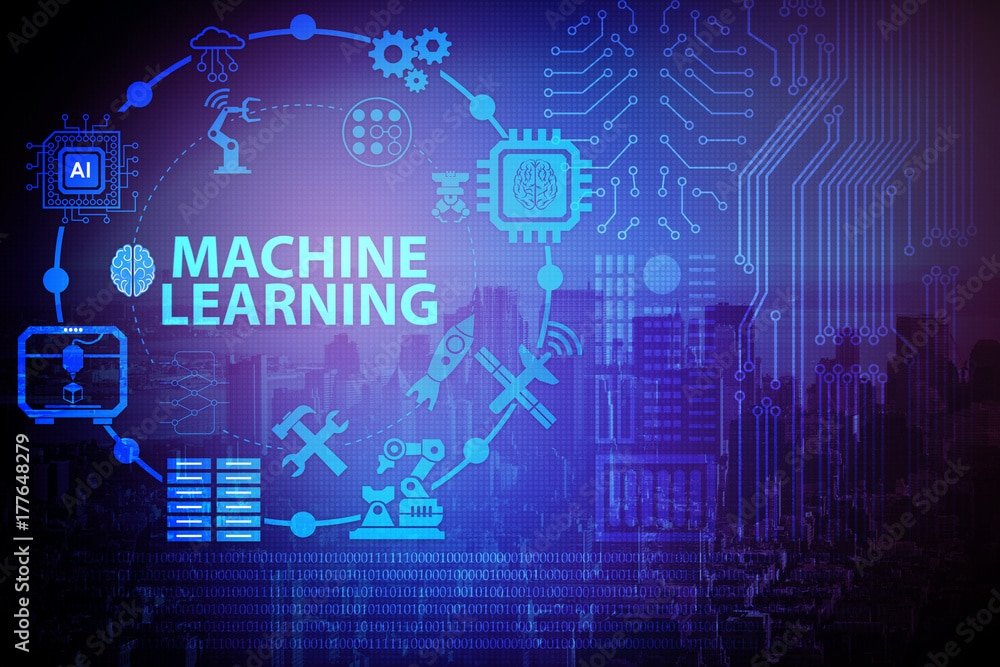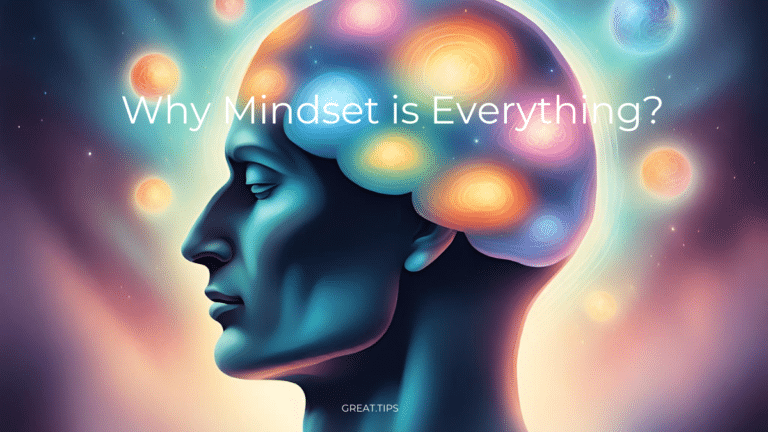What is Generative AI: An Introduction to Creative Machine Learning
Generative AI represents a frontier in artificial intelligence that focuses on creating new content, whether it be text, images, audio, or any other form of digital media. It operates by learning from vast datasets and applying this knowledge to generate original outputs. A common AI system is constructed to follow explicit instructions, generative AI uses learned patterns and structures to develop new creations that can mimic the quality of human-generated content.
At the core of generative AI are algorithms that model the probability of a sequence of data. These models are trained using machine learning techniques where they absorb information from a large corpus of pre-existing data. Once the model is trained, it can then predict or generate sequences of data, leading to the creation of new content that resembles the original training material. The variety of applications for generative AI is vast, ranging from automating repetitive design tasks to creating realistic synthetic media, writing software code, and much more.
Key Takeaways
- Generative AI automates the creation of new content based on learned data patterns.
- Its applications span diverse fields, from design to software development.
- Training on extensive datasets enables generative AI to mimic human-like content generation.
Understanding Generative AI
Unlike traditional Artificial Intelligence, Generative AI can create new content, from text to images, by learning from existing data. It represents significant strides in technology and an evolving landscape in the AI domain.
Defining AI and Generative Models
Artificial Intelligence (AI) generally enables machines to perform tasks that typically require human intelligence. Among these are generative models, which are specifically designed to generate novel data samples that are similar to the data they were trained on. These models can be clustered into two groups: discriminative models, which are used to classify data, and generative models, which can produce new data instances.
Generative AI operates by using algorithms to model high-dimensional distributions of data. This means that the technology learns the complex patterns in the provided information and can then synthesize new items—whether they be text, images, or other media—that bear a striking resemblance to the original dataset yet are unique.
Historical Development and Key Technologies
The historical development of Generative AI has its roots in the early days of artificial intelligence. Early models were limited by processing power and available data, but the field has rapidly evolved with advancements in both areas. Notably, two major types of generative models became prominent:
- Generative Adversarial Networks (GANs): Introduced in 2014, GANs consist of two neural networks, the generator and the discriminator, which work in tandem to produce high-quality synthetic outputs.
- Variational Autoencoders (VAEs): These are another form of generative models that provide a probabilistic manner for describing observations in latent space.
As for key technologies in Generative AI, recent advancements are largely attributed to the increase in computational power and the creation of large datasets. Cloud computing platforms such as Azure have made it possible for AI researchers and practitioners to access the necessary computational resources.
OpenAI has been instrumental in the field, developing models that have pushed the boundaries of what Generative AI can achieve. These models excel in understanding and generating natural language, contributing to tasks such as text completion, translation, summarization, and even the creation of novel artistic images. The technology has far-reaching implications, impacting sectors ranging from entertainment to academia, and it continues to evolve at a brisk pace.
Core Concepts and Principles

Generative AI is a transformative aspect of technology, wielding algorithms to fuel machine learning and innovation. Its principles rest on the solid foundation of data science and the creation of intelligent systems that can generate new, original content.
Machine Learning Foundations
Machine learning (ML) is the bedrock of generative AI. There are several types of algorithms which analyze data to learn, to identify patterns, and make decisions with minimal human intervention, depending on the level of human supervision required. A fundamental process in ML involves training a model on a dataset to improve task performance over time. Here are some of the types of ML algorithms:
- Unsupervised Learning: These models discern patterns and relationships within unlabeled data.
- Supervised Learning: Trained on labeled data, these models can predict outcomes based on input data.
- Reinforcement Learning: programmed with a goal and rules for achieving that goal. The algorithm is also programmed to seek positive rewards for actions that help achieve the goal.
Introduction to Large Language Models (LLMs)
Large Language Models (LLMs) like OpenAI’s models are a pinnacle of innovation within generative AI. These models understand and generate natural language, thereby revolutionizing human-computer interaction.
- Structure: LLMs are built upon deep learning architectures, such as neural networks, that resemble the human brain’s structure and function.
- Functionality: With the capacity to process and produce natural language, LLMs excel in tasks like translation, summarization, and question-answering.
- Training: They require significant computational resources and vast datasets to accurately capture the nuances of language.
- Applications: LLMs are instrumental in creating tools for writing assistance, chatbots, and more complex AI applications.
By appreciating the core concepts and principles of machine learning and LLMs, readers can better understand the mechanics behind the scenes of modern generative AI technologies.
Practical Applications of Generative AI
Generative AI is altering the digital landscape by enhancing creativity, streamlining development processes, and revolutionizing design applications. Its capabilities extend from crafting written content to generating original images, thus serving as a pivotal tool for entrepreneurs, developers, and creatives alike.
Text Generation with AI
Generative AI equips startups and enterprises with powerful text generation tools which transform natural language input into coherent and contextually relevant content. Tools utilizing AI, like OpenAI‘s GPT models, can draft emails, compose articles, and even create poetry. They learn from patterns in text data to produce outputs that mimic human-like language. Applications range from enhancing chat applications to automating customer service responses.
- Applications: Email composition, article writing, poetry
- Platforms: GPT-3, Chatbots
Image Generation Innovations
Image generation through AI, such as with DALL-E, has opened up new horizons in creative design. These AI models interpret textual descriptions and turn them into visual art, making design more accessible and less time-consuming. They serve in creating book covers, website graphics, and concept art, pushing the limits of computational creativity.
- Design Output: Book covers, web graphics, concept illustrations
- Tools: DALL-E, generative design software
AI in Web Development and Search Apps
In the realm of web development, generative AI streamlines workflows through low-code AI applications. This benefits developers by allowing them to build with natural language commands, which the AI interprets to generate code. Similarly, AI powers search applications, refining search algorithms for more accurate and helpful results. These capabilities enhance user experience and reduce the time required to launch digital products.
- Web Dev Tools: Low-code platforms, AI-assisted design
- Search Enhancements: Algorithmic refinement, natural language processing
Generative AI in the Development Environment
Generative AI technologies are transforming development environments, enabling developers to create, test, and deploy innovative solutions with text and image generation capabilities. This section explores how to set up these environments, work with Jupyter Notebooks, and harness the power of platforms like Azure, integrating services such as Azure OpenAI.
Setting Up a Development Environment
In setting up a development environment for Generative AI, a developer requires access to a computing platform capable of running the necessary AI models. The first step is often to secure resources from a cloud provider, such as Azure, which offers varied virtual machine configurations suitable for different workloads. It is essential for a developer to install relevant software libraries and development tools, such as those provided by OpenAI. They can utilize platforms like GitHub to manage source code and collaborate with other developers. In some cases, Azure OpenAI Service can be linked directly with the development environment, streamlining the deployment process.
Working with Jupyter Notebooks
Jupyter Notebooks are an instrumental tool for developers working with Generative AI. They allow developers to write and execute code in an interactive environment, which is especially beneficial for iterative creation and testing of AI models. These notebooks can be readily hosted on cloud platforms such as Azure, enabling developers to access powerful compute resources and OpenAI credits to run their notebooks. A typical Jupyter notebook with code examples may feature segments of Python code alongside rich text annotations, aiding in both comprehension and demonstration of the Generative AI capabilities being developed.
Leveraging AI on Platforms like Azure
Azure provides an extensive ecosystem for deploying Generative AI applications. Developers can leverage the Azure OpenAI Service to integrate state-of-the-art AI models into their applications. This service simplifies the ingestion of both text and image data, model training, and deployment. Tools such as Azure Machine Learning can be used to manage the AI development lifecycle. The main advantages of using Azure include the ability to scale resources as needed, streamlined management of AI services, and access to comprehensive security features. Moreover, developers can employ OpenAI credits provided by platforms like Azure to fund their initial model experiments and prototyping efforts.
By leveraging these methodologies and technologies, the development environment for Generative AI can be a robust workspace tailored to rapidly evolving AI requirements.
Design and User Experience

In the realm of Generative AI, design and user experience are paramount, serving as the bridge between advanced technology and the end-user. A well-crafted interface can make AI applications accessible, while ethical design acknowledges the limitations inherent in AI systems.
Designing Interfaces for AI Applications
Designing user interfaces (UI) for AI applications involves understanding both the capabilities of the AI and the needs of the user. Interfaces should be:
- Intuitive: The user should be able to navigate the application without confusion.
- Informative: Display relevant information that helps users understand AI responses.
- Responsive: The UI must respond quickly to user inputs to avoid frustration.
For instance, a chatbot should provide clear cues for interaction, such as typing indicators or speech bubbles, to signify that it is processing the user’s request.
Considering Ethical Design and Limitations
Ethical considerations in AI design address how the application respects user privacy, prevents bias, and ensures transparency. Key elements include:
- Transparency: Users should be made aware of how the AI operates and uses data.
- Consent: Obtaining explicit user consent for data collection is critical.
- Privacy: Protecting user data from unauthorized access is essential.
The design should also inform users of the AI’s limitations to set realistic expectations. For example, if an AI-powered diagnostic tool has a certain accuracy rate, this should be clearly communicated.
Integration and Advanced Techniques
Integrating generative AI into various applications requires understanding advanced techniques to leverage its full potential. These methods enable finer control and more dynamic interactions with the AI.
Advanced Prompt Engineering
Advanced prompt engineering involves the deliberate construction of input data to guide generative AI models toward producing specific outcomes. The fundamentals of prompt engineering are grounded in the principle that the quality of the AI’s response correlates directly to how well the prompts are structured. To exemplify, a well-crafted prompt could look as follows:
- Prompt: “Write a function in Python that computes the factorial of a non-negative integer.”
- Expected Output: AI generates Python code for the factorial function.
AI-Enhanced Chat Applications
Chat applications powered by AI, such as ChatGPT, use embeddings and contextual understanding to improve user interactions. For instance, chatbot functionality in customer service can be expanded by using these techniques:
- Keyword Embeddings:
- Purpose: Enhance search and response accuracy.
- Implementation: Embed user query keywords and search knowledge base for best match.
Using Function Calling in External Apps
The integration of function calling in external applications allows generative AI to interact with and control other software, creating more dynamic and capable systems. This involves mapping AI responses to specific actions within the application. For example:
- Function Call: Retrieve user data
- AI Action: Use the command to access an external database and return the requested information.
Function calling enables AI systems to perform tasks beyond mere conversation, such as data manipulation and complex problem-solving. It is especially powerful when combined with advanced prompt engineering, where prompts directly initiate specific function calls. This integration between generative AI and external systems significantly expands the potential use cases and capabilities of AI-powered solutions.
Community and Continuing Education

In the field of Generative AI, engaging with a community and pursuing continuous learning are crucial steps for beginners. They provide opportunities to collaborate, enhance skills, and stay updated with the latest advancements.
Joining AI Discord Servers and Forums
AI Discord servers present dynamic platforms for beginners to engage in real-time conversations. They can join channels dedicated to Generative AI topics, which offer a mix of learning and networking opportunities.
- Real-time Interaction: Immediate feedback and discussion with peers and experts.
- Diverse Communities: Access to a range of expertise from hobbyists to professionals.
AI Forums such as Reddit and Stack Overflow serve as hubs for asynchronous communication, allowing in-depth discussion and exchange of ideas.
- Archived Knowledge: Extensive repositories of past discussions and solutions.
- Resource Sharing: Links to extra resources such as articles, courses, and tutorials.
Contributing to Open Source AI Projects
Contributing to open source AI projects on platforms like GitHub fosters practical learning and community contribution. Beginners can:
- Browse Projects: Explore repositories related to Generative AI.
- Understand Contribution Guidelines: Refer to README.md or CONTRIBUTING.md files for project-specific instructions.
Table: Benefits of Open Source Contribution
Benefit Description
Skill Development Hands-on experience with real-world AI codebases.
Portfolio Building Contributions serve as a public record of skills.
Collaborative Learning Working with others offers new perspectives and insights.
Assignments in open source can range from simple documentation improvements to developing features, which further enhances practical experience.
Building a Learning Path

When embarking on the journey of learning Generative AI, learners need a structured framework that progresses from foundational concepts to more advanced applications. This requires careful selection of course materials, tackling assignments, and utilizing additional resources to deepen understanding.
Selecting the Right Course Material
Learners should begin with course materials that include a short video introduction to Generative AI, followed by written lessons that explain the basics. The ideal course should be crafted by knowledgeable instructors, providing a balance between theoretical knowledge and practical examples. Here’s a typical learning structure:
- Introduction Video: A short, engaging video that outlines what Generative AI is about.
- Written Lessons: Detailed text-based lessons that explain fundamental concepts.
- Interactive Content: Quizzes and interactive modules designed to reinforce learning.
It’s essential for the course to be up-to-date and comprehensive, encompassing a wide array of relevant topics within the field of Generative AI.
Tackling Assignments and Challenges
Assignments are critical in gauging one’s understanding of course content. They should be:
- Well-defined: Clear instructions on what is expected for the completion of each challenge or assignment.
- Progressive: Starting with simpler tasks that gradually increase in complexity.
Learners should embark on these assignments after each module to apply what they’ve learned, thereby solidifying their knowledge. Instructors may offer feedback, which is instrumental for learners to understand areas for improvement.
Expanding Knowledge Through Resources
To further expand their knowledge beyond the core course materials, learners should have access to a variety of resources. These can include:
- External Reading: Links to books, research papers, or articles.
- Community Forums: Where learners can discuss the course content and get different perspectives.
- Supplementary Videos: Additional visual content exploring topics in greater depth.
Links to extra resources and engaging with a wider community are pivotal for learners who wish to dive deeper into the intricacies of Generative AI and keep abreast of the latest developments.
Frequently Asked Questions
This section addresses common inquiries surrounding the applications, resources, and foundational knowledge related to Generative AI for those new to the field.
Common applications of generative AI?
Generative AI finds use in various fields such as creating realistic images, developing new drugs, and generating music or text. In the art and design space, it assists in conceptualizing visuals, while in technology, it aids in enhancing machine learning models.
Which tools are recommended for beginners in generative AI?
Beginners can start exploring generative AI with user-friendly tools like TensorFlow, Keras, and PyTorch. These platforms come with extensive documentation and community support, making them suitable for individuals at the start of their generative AI journey.
Can you suggest some comprehensive books for learning generative AI?
“Generative Deep Learning: Teaching Machines to Paint, Write, Compose, and Play” by David Foster comes highly recommended. Another valuable resource is “Generative Adversarial Networks Cookbook” by Josh Kalin, providing practical guidance on GANs.
Where can I find a beginner-friendly Python tutorial for generative AI?
For those seeking beginner-friendly tutorials in Python for generative AI, websites like Coursera, edX, and Kaggle offer structured learning paths. These platforms cater to varying levels of expertise and provide interactive learning experiences.
What online courses and certifications are beneficial for starting with generative AI?
Beginners can take advantage of online courses such as “Deep Learning Specialization” on Coursera or “Generative AI” on Udacity. These programs provide a blend of theoretical knowledge and practical experience, and they often come with certifications upon completion.
How does generative AI function in simple terms?
Generative AI operates by using algorithms that leverage neural networks to learn from a vast amount of data and generate new content. These algorithms can uncover patterns and make data-driven predictions or decisions, mimicking human creativity.











